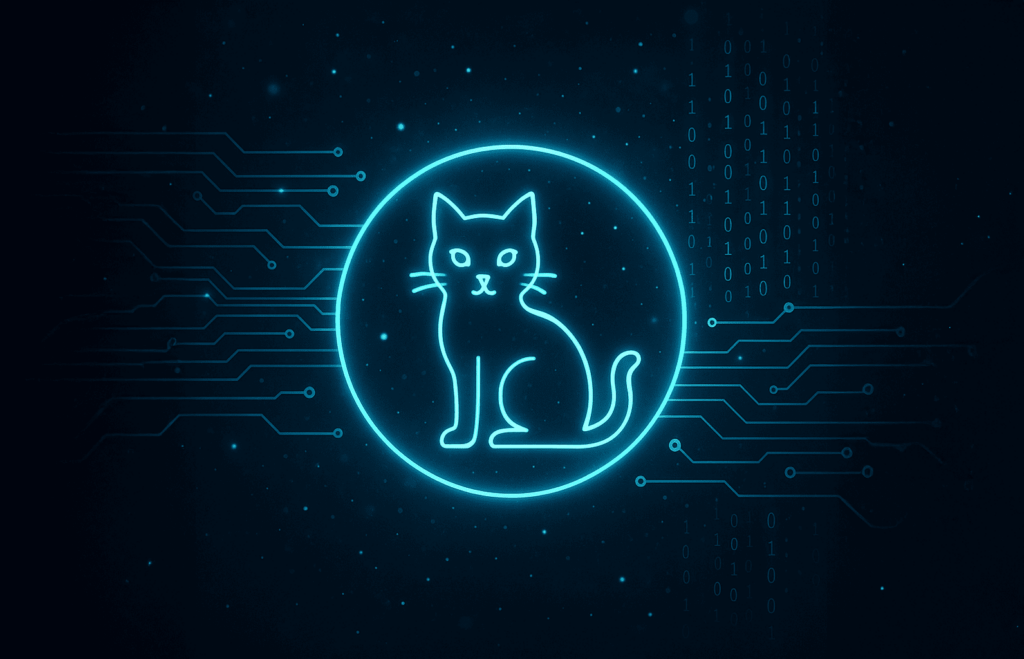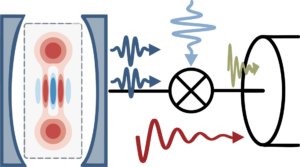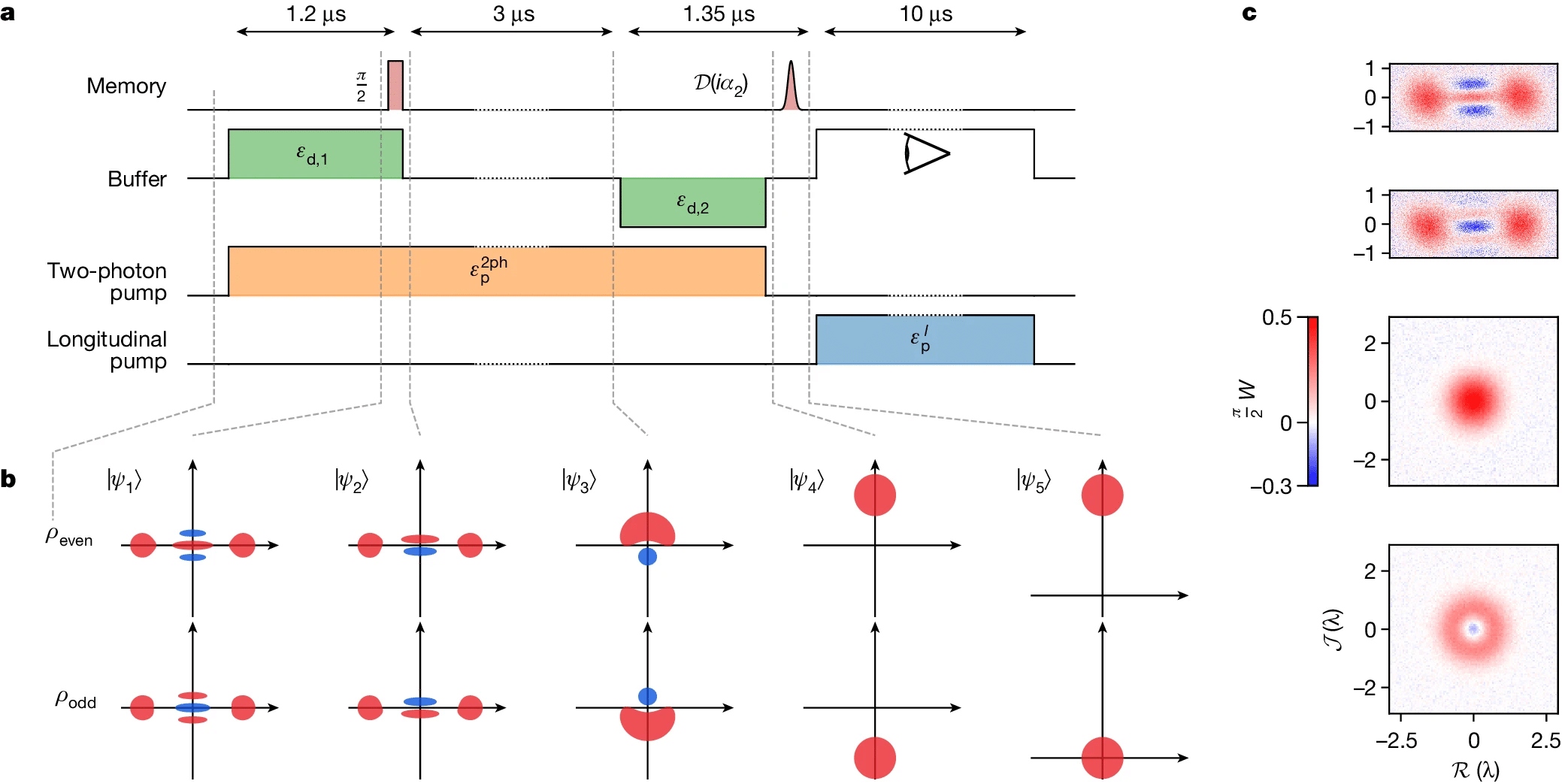Quantum dissipation under control: making cat qubits reliable for a faultless quantum computer


In quantum mechanics, a “cat state” refers to a situation where a particle can exist in several states at the same time, as illustrated by Schrödinger’s famous paradox where a cat could be both alive and dead. In quantum computing, this concept is used to create “cat” qubits. Unlike traditional qubits, which store information in a single state, cat qubits store information in a combination of two distinct states at once, in an electromagnetic circuit.
This superposition enables cat qubits to correct certain types of error on their own, such as the unexpected change of state from 0 to 1 (a so-called “bit-flip” error). This automatic correction mechanism works thanks to a phenomenon known as non-linear dissipation, which helps the system return to a stable state while eliminating certain types of error. These qubits therefore hold great promise for making quantum computing more robust and reliable.
But not everything is so simple in the quantum world. To generate the beneficial dissipation that stabilizes qubits, a mechanism called “parametric pumping” is used. This involves applying some kind of external control that modifies the circuit so that two photons interact to maintain qubit stability.
However, this control introduces a problem: it creates “parasitic dissipative channels”. These are unexpected paths through which quantum information escapes, as if invisible leaks were forming. These leaks reduce the time during which the qubit can reliably retain information, a time known as the “coherence time”. Until now, these phenomena have been difficult to understand, as they cannot be explained by the classical models used until now, which are based on fairly simple approximations.

Explanatory diagram: on the left, the storage cavity housing the quantum state – the famous “cat”; on the right, the environment (cables, reading lines, etc.) which can disturb the system; in the center, a parametric coupling element acting as a mediator between the two, introducing the interactions necessary for stabilization. The arrows represent energy flows: beneficial stabilization in blue and green, parasitic dissipation in red. The latter is precisely what the study seeks to model and minimize.
The innovation lies in an original method used to understand these unwanted losses of information. The team has combined two powerful tools to analyze the phenomena in depth:
By combining these two methods, the researchers were able to identify the mechanisms responsible for the degradation of qubit performance. They were also able to establish a precise relationship between the microscopic characteristics of the circuit and the length of time over which quantum information remains stable, providing a detailed overview for improving qubit reliability.
This work is part of a collaboration between academic research and industrial innovation. Start-up Alice & Bob, a pioneer in the development of fault-tolerant quantum computers, is drawing on the scientific expertise of the Centre Automatique et Systèmes (CAS) at Mines Paris – PSL. Léon Carde embodies this synergy: a doctoral student on a CIFRE thesis, he divides his time between the CAS laboratories and the Alice & Bob teams.
Indeed, this breakthrough is not just theoretical. By identifying parasitic dissipation mechanisms, the researchers are proposing practical recommendations for designing more reliable quantum devices. For example, they show that certain readout cables or components close to the qubit can, if not properly tuned, increase photon losses and reduce information stability. On the other hand, more careful management of these elements enables the qubit’s coherence to be maintained for longer, which is essential to guarantee reliable operation of quantum computers.
This work represents an essential building block in the construction of an error-resistant quantum computer capable of autonomous operation over long periods. The proposed methods could also be applied to other types of quantum circuits, beyond chat qubits.
